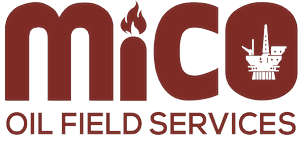Oil and Gas is crucial industry that play a vital role in any economy. Every industry faces complexities and challenges that need to be cater to make industry profitable. The transportation of oil and gas plays a crucial role in ensuring the efficient flow of energy from production sites to end-users, and managing the complexities involved is a key challenge for the industry. The process includes multiple transportation modes, such as pipelines, ships, and trucks, each with its own regulatory, environmental, and logistical challenges. In this article, we explore the intricacies of oil and gas transportation, including the strategies employed to optimize these systems and address the risks associated with global energy transportation.
Oil and Gas Pipelines: The Backbone of Transportation
Pipelines are a central component of oil and gas transportation, providing a reliable and efficient method to move large volumes of product across vast distances. They serve as the primary mode of transport, particularly for onshore operations, linking production sites to refineries, storage facilities, and distribution points. According to recent data, more than 70% of the world’s crude oil is transported via pipelines.
The biggest advantage of pipelines is cost efficiency over long distances and low environmental impact compared to other modes. However, pipelines also pose significant challenges, such as the need for regular inspections to prevent leaks, ruptures, and spills. Innovations in pipeline monitoring, such as intelligent pigging and remote sensors, have improved the ability to detect issues early, reducing potential risks to both the environment and operational costs.
Maritime Transportation: The Role of Tankers in Oil and Gas
For regions not serviced by pipelines, maritime transportation becomes essential, especially for transporting oil and liquefied natural gas (LNG). Tankers are critical in connecting oil-exporting nations with global markets. The sheer size and capacity of tankers, which can carry millions of barrels of oil, make them a key player in the global supply chain. For instance, the largest oil tankers, such as Very Large Crude Carriers (VLCCs), can transport up to 2 million barrels of oil in a single trip.
However, maritime transportation faces risks, including oil spills, which have devastating environmental impacts. Industry regulations, such as the International Maritime Organization’s (IMO) stricter sulfur cap limits, have been implemented to minimize pollution and environmental damage. Additionally, the rise of LNG-powered vessels is another effort to reduce emissions and improve sustainability in maritime transport.
Trucking and Rail: Flexibility for Regional Distribution
Trucking and rail provide more flexibility than pipelines and tankers, making them valuable for short-to-medium distance transportation, particularly in regions lacking pipeline infrastructure or with fluctuating demand. Trucks are ideal for delivering refined petroleum products like gasoline, diesel, and jet fuel directly to end-users. Rail, on the other hand, offers an efficient alternative for transporting large volumes of crude oil over land, especially in areas where pipelines are not economically viable.
The North American oil boom led to a surge in crude-by-rail, but this mode is also associated with higher safety risks compared to pipelines. Accidents involving railcars carrying oil can be catastrophic, prompting stricter regulations and improved safety standards in recent years. Rail transportation also requires ongoing logistical coordination to ensure that products are delivered on time and in compliance with local safety regulations.
Challenges of Cross-Border Transportation of Oil and Gas
Transporting oil and gas across international borders adds another layer of complexity. Varying regulatory frameworks, geopolitical factors, and trade tariffs can significantly impact the efficiency and cost of transportation. Additionally, cross-border pipelines or shipping routes are subject to potential political instability, sanctions, and disruptions, as seen in recent global energy crises.

A significant example of geopolitical risk is the Nord Stream pipeline, which has been a focal point of political tension between Europe and Russia. Any disruption in major oil or gas pipelines like this can lead to market volatility and supply shortages, demonstrating the importance of strategic planning and diversification of transportation routes.
Environmental and Regulatory Concerns Oil and Gas
The environmental impact of oil and gas transportation is a pressing issue for both companies and governments. From pipeline leaks to maritime oil spills, the industry faces growing pressure to minimize ecological damage. In response, there have been advances in spill prevention and mitigation technologies, such as advanced leak detection systems and improved containment methods. Additionally, regulatory frameworks are becoming stricter, with laws mandating lower emissions, improved safety standards, and more frequent inspections.

Energy companies are also investing heavily in green technologies to reduce their environmental footprint. For instance, some are transitioning to LNG-powered fleets, while others are exploring carbon capture and storage (CCS) technologies to mitigate greenhouse gas emissions from transportation operations.
Future Innovations in Oil and Gas Transportation
Digital transformation is reshaping the oil and gas transportation industry, leading to greater efficiency, safety, and sustainability. The integration of IoT, AI, and data analytics into transportation networks allows for real-time monitoring of infrastructure, optimizing routes, and reducing delays. Predictive maintenance systems enable operators to anticipate and resolve issues before they escalate into costly failures.
Additionally, the future of oil and gas transportation may see a gradual shift toward more sustainable alternatives. The adoption of hydrogen as a potential fuel source and the increasing focus on electric-powered transportation systems indicate that the industry is moving toward greener solutions. These developments, combined with stricter environmental regulations, will likely lead to a more eco-friendly and efficient global energy transportation system.
Discussion
The complexities of oil and gas transportation are vast, encompassing a wide range of logistical, environmental, and geopolitical challenges. Pipelines remain the most efficient and cost-effective method for long-distance transport, but maritime, trucking, and rail also play vital roles in connecting global energy markets. Addressing environmental concerns and adapting to regulatory changes are critical in ensuring the industry’s sustainability. As digitalization and green technologies evolve, the oil and gas transportation sector will continue to innovate, aiming for a balance between operational efficiency and environmental responsibility.









